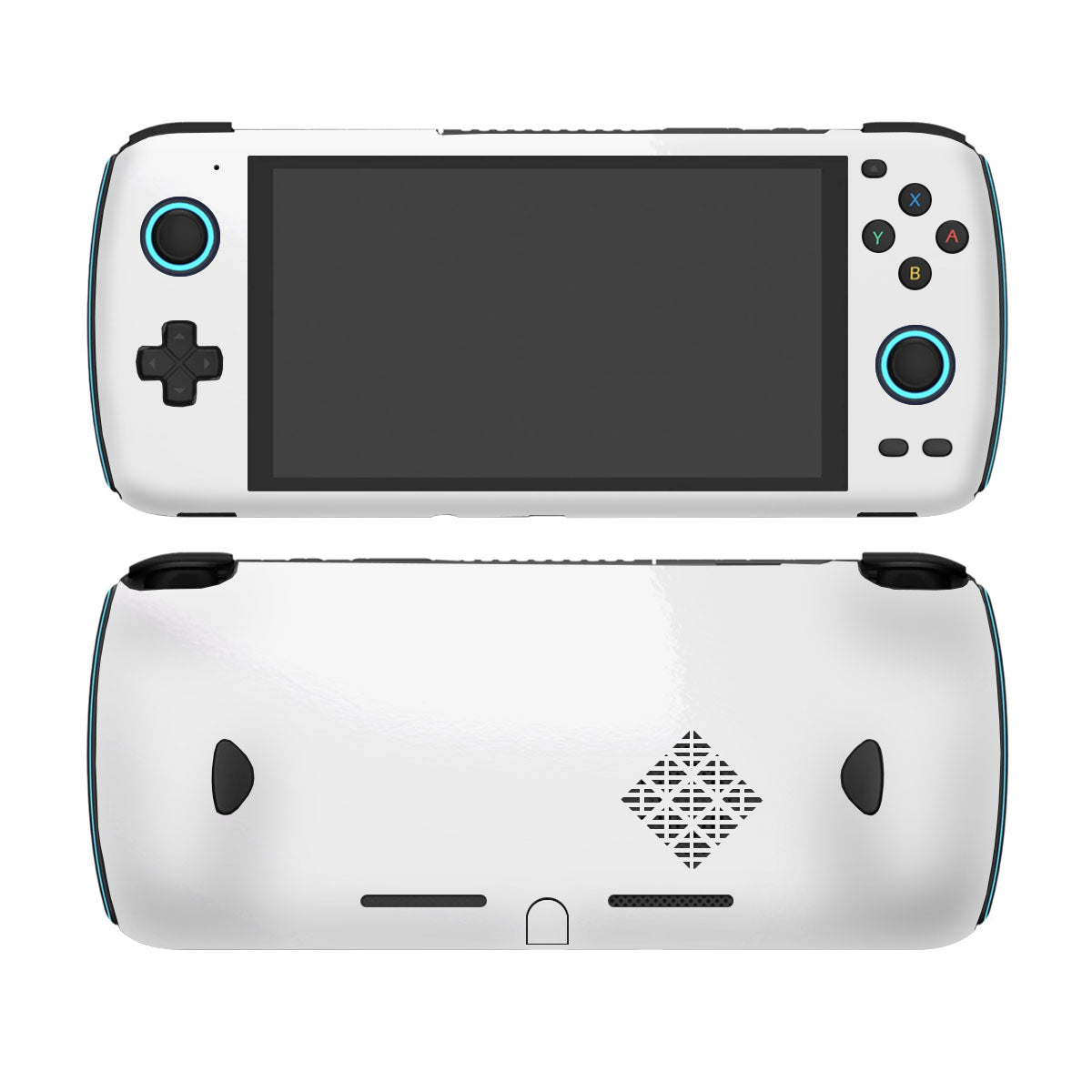| AYN Technologies’ Odin Lite Price: $199 Find it on: AYN Website  |
Rating: 9.5/10
Pros: Cons: |
Every retro game handheld enthusiast shares a goal: Finding “the one.” It’s that handheld that meets every single expectation you’ve ever had. It’s beautiful, elegant, powerful and makes you want to spend all your time with it. It’s just something that makes you want to say “I do.” Wait, what was I talking about again? Ah yes, handhelds.
My search for “the one” has been going on for the better part of 10 years. Back in 2013, I purchased several handhelds that started me on this journey: The Genesis Ultimate Portable Game Player, the GamePlayer X18, the Retro Duo Game System. More recently, I’ve gotten my hands on the 1Up Pi-Boy, the Retroid Pocket 2+ and the BittBoy V3. Each of these devices has its own merits, but there was always some kind of pitfall to them. Either they were not powerful enough, had form factor issues, or didn’t have a good price-to-performance ratio.
My search may have ended with AYN Technologies’ Odin Lite. There are some issues with this device as well, but taken as a whole, this may be the final handheld I ever purchase.
Let’s start with some of the negatives, because there are only a few that I could come up with in the week or so I’ve had the device. The most glaring is the HDMI out connection. AYN acknowledged this was what caused the severe delay in mass producing the product. They claimed to have fixed it, but when I was using the HDMI out in combination with my video capture card, there were significant glitches. Rarely did I go more than a minute without the video cutting out for a few seconds at at time. Whatever AYN attempted to resolve, they didn’t fully solve it. Then again, this only matters if you’re planning on playing on a big screen. For most people using this handheld, it’s likely they’d want to keep it as a handheld.
The only other issue I had was with button placement. AYN decided to put the select/start button on the lower right hand corner of the device, and during gameplay, I’ve accidentally hit it on more than one occasion. It would’ve been best played either on the left side, or further down on the right.
Some may also point to the fact that the Odin Lite, unlike the Base or Pro, isn’t dual boot. This may be a factor that may lead some to purchase other premium products for a higher price. But for me, I only use handheld to play retro games and not Windows games, so I had no issue with this.
Okay, now let’s move on to the good stuff. This is an incredibly powerful device. The Odin Lite features a Mali-G68 MC4 processor, which, with few exceptions, opens up the entire PlayStation 2, GameCube and Wii libraries. I did find a few games here and there (Hot Shots Golf 3, for instance) that the Odin Lite couldn’t handle, but for every 10 sixth generation games I tried, nine of them played nearly flawlessly. You can also play some of the Nintendo Switch library, which was an added bonus. The beautiful 5.98 inch IPS LCS screen is a joy to play on, with sensitive touch screen controls and a 1080×1920 (16:9 ratio) output. It’s an absolutely stunning gameplay experience.
Android 11 comes packaged with the device, which also gives a bump to the emulator performance of Dolphin-MMJR and AetherSX2, among others. And the 6600mA battery makes for decently long gameplay of around 2-3 hours. The form factor also feels like a premium product in the hands and the ergonomics are outstanding. I never felt like I was compromising on anything when using it.
To be sure, there are other more powerful devices on the market. The AYANEO Air, for instance, can emulate PlayStation 3, Wii U and Xbox. But for me price-to-performance was one of the pillars of finding “the one.” I purchased my Odin Lite for $199. The ANANEO Air entry level device will cost you $500 and the battery will only last about an hour. To me, the best price-to-performance devices are the Odin Lite, Retroid Pocket 2 ($99) and PowKiddy V90 ($50). But at the end of the day, sixth and seventh generation game performance was also at the top of my list, which is why I was willing to shell out double the money for the Odin Lite that I paid for the RP2+.
Maybe one day, a device in the $250-300 range with a premium form factor, solid battery life, ability to emulate PS3/Wii U and an OLED 6″ screen will come on the market. But that day isn’t coming anytime soon. Until then, the Odin Lite is “the one” for me, and should be for many years to come.